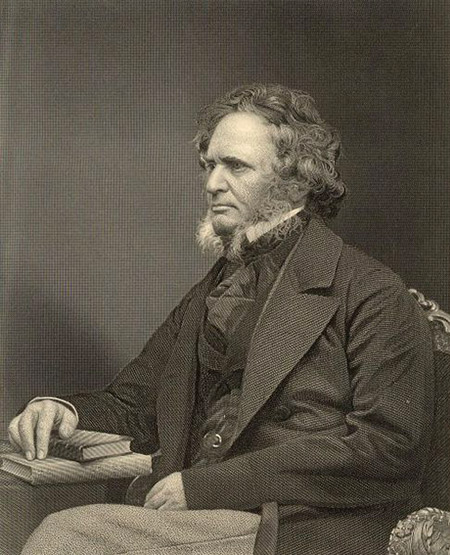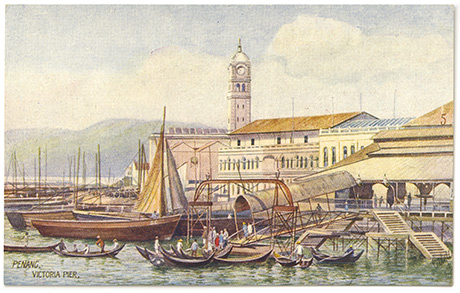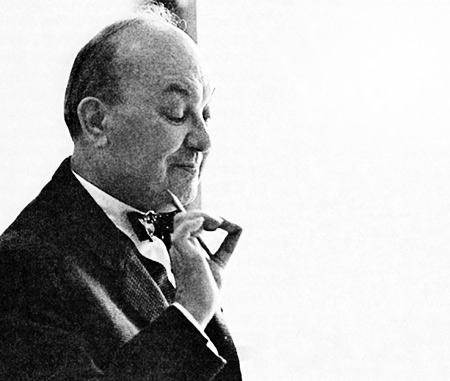Marking time in May 2013
Advice to doorknocking politicians
Social media, 19th century style: This article in the South Australian Weekly Chronicle for 16 July 1859 shows that using the latest technology for electioneering is no new thing.
TO MEMBERS ABOUT TO VISIT THEIR CONSTITUENTS.
A member can pay a visit now to his constituents either in person or in the more elegant form of a visiting card, that not merely contains his electioneering address, but also his name and physiognomy in full. This is a new feature, that has never yet been put on the canvass of an election. For instance, we are informed by an advertisement that—
“Messrs. A. Marion & Co. think it will be of great advantage to candidates who cannot possibly wait personally upon all their constituents to use their Photographic Visiting Cards, which will prove a great saving of both time and trouble in canvassing. They will also afford the electors an opportunity of having a correct portrait of the hon. gentleman seeking their suffrages.”
In this way are likenesses brought home to every man’s door. What a boon, too, conferred on those delinquent M.P.s, who, conscious of having voted wrong, hav’nt the courage to face their constituents in any other form than that of photography. If they are not gifted with the call of eloquence, such a visit saves them an infinity of stuttering and stammering ; and yet, the little they so say is spoken strictly by the card, and must go home, if left at the right house. The boon would be further increased if Messrs. Marion would take off the entire supporters of Lord Derby, and take them off so effectually, that we should never see them again.
Reading old newspapers online is a wonderful research tool, and a black hole that can suck in any amount of time. After I found the article above, I wondered whether readers in Adelaide were familiar with carte-de-visite photographs in 1859. I knew that the carte-de-viste craze was only just starting in Europe, and that the first Australian photographer to offer cartes-de-visite was Olaf W Blackwood of Sydney in 1859. I was not surprised to find that the fad reached Adelaide a bit later. By June 1862 an Adelaide bookseller was advertising carte-de-visite portraits of the Royal Family and Distinguished Personages of All Nations. The earliest mention I found of an Adelaide photographer taking carte-de-visite portraits was an advertisement in January 1863 by Cornock & Cardell, druggists and photographers.
I mentioned yesterday the firm of Marion & Co which became a global supplier of photographic materials, particularly those connected with the carte-de-visite business.
The disparaging reference to the Conservative Lord Derby is interesting because of its timing. Derby’s second prime-ministership ended on 11 June 1859, when his government was replaced in the British parliament by Palmerston’s Liberals. The article appeared in the Adelaide newspaper 30 days later. But the news traveled from Westminster to Australia by ship—a journey of two or three months—so the liberal-leaning journalist in Adelaide would not have known.

John Deazeley’s backdrop
Here’s an object that tickles my interest in three branches of history—photography, lighthouses, and the region where I live.
It’s a cabinet photograph made in the 1880s by John Deazeley, a photographer with a studio in Queen Street, Brisbane. Queen Street was, and still is, the main commercial street in the city. Three other Brisbane photographers had Queen Street studios then—Thomas Mathewson, Albert Lomer, and Eddie Hutchison.
The photo shows a young woman lounging on a sheepskin rug draped with leaves, as if at a seaside picnic. She’s wearing a dress with many ruffles, and holding a dainty basket. It’s a pleasing photograph, and a departure from the usual upright Victorian pose with curtains, columns and overstuffed chairs. The background is a painted seascape with waves breaking on a rocky shore, a cloudy sky, and a schooner on the horizon. In the middle distance is a headland with a lighthouse. I’m guessing it represents Cape Moreton, a fondly remembered landmark for immigrants arriving in Brisbane. Perhaps John Deazeley chose to have this backdrop painted to locate his subjects in their new place.
The back of the photo reveals another local connection—in fine print, the name of the firm that printed the card. Watson, Ferguson & Co was a big business in Brisbane in the 1880s—a lithographic and letterpress printer, a book seller and importer, a stationery retailer and manufacturer, a bookbinder.
Of the four Queen Street photographers, only Deazeley went to the local printer for his carte-de-visite and cabinet cards. The others ordered theirs from Marion & Co of Paris and London.
Heritage impact assessment lah
Here’s a sequel to my post about heritage impact reports. Dr Lee Lik Meng, Associate Professor of planning at the Universiti Sains Malaysia, took part in Donald Ellsmore’s workshop and wrote about the experience on his blog.
In my opinion, we failed miserably in our effort to protect the “cultural significance” of George Town, according the standards and protocol approved by UNESCO. The facilitator/instructor did at the very beginning say that it is a difficult task (“not easy”), this [heritage impact assessment] thing.
Was the facilitator too harsh in his grading? After all, among the 20 or so participants were quite a number of heritage consultants (architecture-based professionals) from George Town and Melaka who had restored numerous buildings to their past glory. Harsh or not, I can say for sure that all those heritage experts in the workshop have very high skills and knowledge about the architecture, the tangible part of the “cultural significance”. The stumbling block is the intangibles. Make no mistake about it. It isn’t that the local experts are not aware of the issues (as was obvious in the follow-up discussion) but I sense that they “know” the local situation very well (especially the politics of development) and it is not something they have a lot of influence over.
Ah yes, those intangible values can be slippery. And who has the wisdom to sort the possible from the impossible? Dr Lee’s yarn suggests to me that I should visit George Town—a thought that is also stirred whenever I read a couple of other blogs.

Fingerspitzengefühl
I found this delightful German word in Oliver Reichenstein’s fine piece Learning to see. He writes about design that combines functional and aesthetic value—You don’t get there with cosmetics, you get there by taking care of the details, by polishing and refining what you have. This is ultimately a matter of trained taste, or what German speakers call “Fingerspitzengefühl” (literally, “finger-tip-feeling”). He adds a photo of Jan Tschichold to illustrate.
